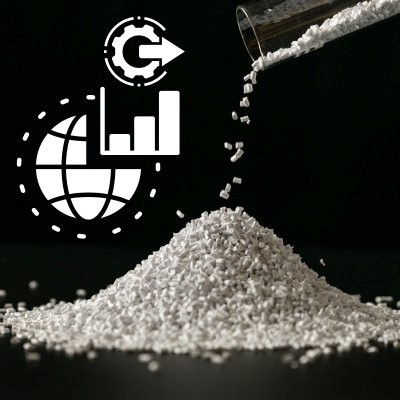Industry: Polymer
Author: Aryan Jain
Publish Date: 21 November, 2024

Introduction
This B2B polymer manufacturing company, with over four decades of experience, provides synthetic polymers such as epoxy resin, silicone, and polyurethane to clients across India, Europe, and the USA. With an annual revenue of ₹36 crore, the company sought to address challenges related to operational efficiency, manufacturing costs, and scalability.
The goal was to transition from a people-dependent model to a system-dependent one, allowing sustainable growth and enhanced operational throughput. The CEO, recognizing the need for external expertise, sought assistance from SKIL Global, a consulting firm with a strong track record of implementing lean methodologies and operational improvements in manufacturing companies.
The journey that unfolded highlights the company’s transformation. They embraced lean principles, focusing initially on optimizing manufacturing and research and development (R&D), which were identified as the key drivers of the company’s growth potential.
The Background: A Vision for Transformation

The polymer company was recently acquired by a new managing director. As a highly driven individual, he focused on improving operational output. He also wanted to achieve growth in competitive global markets. His vision was to turn the company into a leader in customized synthetic polymers. This could be achieved only by offering high-quality, innovative products at competitive prices.
This growth-oriented mindset led the new managing director to prioritize operational efficiency as a critical lever for achieving global competitiveness.
The Managing Director’s Goal
Given the dynamic nature of the synthetic polymer industry, the managing director understood two important things. What he realized was that, both continuous innovation in R&D and process optimization, were two non-negotiable factors for long-term success.
He had an ambitious goal. This goal was to transform the company from a traditional, people-driven organization to a system-driven enterprise. This enterprise would be one that could consistently deliver results, regardless of personnel changes or market fluctuations.
The Role of SKIL Global: Assessing the Current State
SKIL Global, upon being brought in by the CEO, began with a comprehensive assessment of the company’s operations. This involved engaging with leaders from every department—manufacturing, R&D, procurement, sales, and logistics. This was done to get a full understanding of how each function contributed to the company’s output and where inefficiencies existed.
Findings after the assessment
- The process began with detailed process mapping, which revealed several bottlenecks and redundant processes, particularly in manufacturing and R&D.
- A lack of reliable data collection systems was also noted. This which made it difficult for the leadership team to make informed decisions about production levels, employee performance, and resource allocation.
- Without access to accurate data, performance tracking and identification of improvement opportunities were extremely limited.
As part of the current state assessment, SKIL Global worked with department heads and the managing director to create a list of key performance indicators (KPIs). These KPIs would serve as benchmarks for success and enable the team to track progress over time.
The KPIs were primarily focused on improving manufacturing throughput, R&D efficiency, raw material utilization, and equipment effectiveness.
Key Challenges Identified

The initial assessment revealed several challenges across the organization:
- Lack of Data for Performance Tracking: One of the first significant challenges was the absence of any real-time data tracking for operations. Without data, it was impossible to measure the effectiveness of current processes or track improvements over time. This lack of insight made it difficult for the leadership team to prioritize changes or investments.
- Underutilization of R&D: The R&D department was central to the company’s innovation pipeline but was operating inefficiently. The team was only able to process 2-3 R&D batches per day. This was due to poor planning, a lack of coordination between departments, and delays caused by inadequate preparation of raw materials.
- Manufacturing Bottlenecks: In the manufacturing department, there were delays in batch production due to machine downtime, inconsistent raw material availability, and a lack of standardized procedures. Equipment utilization was low, with machines operating at only 50% capacity, further limiting production potential.
- People-Dependent Operations: The company heavily relied on the expertise and availability of specific personnel to maintain daily operations. This dependency made it difficult to scale operations and posed a significant risk if key employees were absent or left the company.
Implementing Lean Methodologies: A Strategic Approach
To address these challenges, SKIL Global began implementing lean methodologies. This included a set of principles focused on minimizing waste, optimizing processes, and enhancing overall efficiency.
These lean principles were applied across multiple departments, but the initial focus was on R&D and manufacturing, where the greatest potential for immediate improvements lay.
1. Data-Driven Decision Making

One of the first steps was setting up a data collection system that would provide real-time insights into various aspects of operations. This involved automating data collection where possible and creating simple, manual data entry processes where automation was not feasible.
With this new system in place, the company was able to start tracking KPIs for batch production, raw material utilization, equipment downtime, and employee performance.
The introduction of these metrics provided the company with a clear baseline, which allowed the team to track incremental improvements and assess the impact of the changes being made.
2. R&D Optimization

The R&D department, a critical part of the company’s growth strategy, was identified as a key area for improvement. The department was initially processing only 2-3 R&D batches daily due to inefficiencies in raw material handling, equipment readiness, and project coordination.
SKIL Global implemented several changes to address these issues:
- Raw Material Kitting: One of the most effective changes was the introduction of raw material kitting. This involved pre-preparing the raw materials needed for the next day’s R&D batches. By having everything ready in advance, the team was able to reduce the time spent on weighing and measuring materials, leading to faster batch processing.
- Better Coordination with Manufacturing: The R&D team began coordinating more closely with manufacturing to align their project timelines with equipment availability and raw material procurement. This helped avoid delays caused by equipment being unavailable or materials not being on hand.
As a result of these improvements, the number of R&D batches processed daily increased from 2-3 to 4-5, and equipment utilization improved from 50% to 75-80%.
3. Manufacturing Improvements

The manufacturing department observed the following improvements:
- Introduction of the lean tools helped to streamline batch production and reduce machine downtime.
- Equipment maintenance schedules were optimized to ensure machines were operating at peak efficiency.
- Standard operating procedures (SOPs) were established for batch production to ensure consistency and reduce errors.
These changes not only improved production output but also led to better quality control and reduced waste.
Manufacturing throughput increased, and the company was able to meet customer demand more effectively without needing to increase staffing levels.
Financial Impact
The financial impact of these improvements was significant. Within one year of implementing the lean methodologies, the company’s annual revenue grew from ₹36 crore to ₹42 crore—a 16.7% increase. This growth was attributed to the increased throughput in both manufacturing and R&D, as well as the reduction in operational inefficiencies.
Ongoing Engagement
The engagement with SKIL Global has now been ongoing for 1.5 years, with multiple contract extensions reflecting the company’s satisfaction with the results.
As the initial phase of improvements in manufacturing and R&D has proven successful, the managing director has shifted the focus to optimizing other areas of the business, including supply chain management, customer service, and product innovation.
Conclusion
The transformation of this polymer manufacturing company highlights the power of strategic alignment, data-driven decision-making, and lean methodologies in driving operational improvements.
The company focused on core areas like R&D and manufacturing. It shifted from people-dependent operations to system-dependent processes. This in turn led to a significant improvement in efficiency. The company also experienced an increase in revenue. As a result of which the company is now well-positioned for long-term growth in competitive global markets.
This story serves as a testament to the impact of continuous improvement and the importance of fostering a culture of innovation and collaboration across departments.
If you are interested to achieve similar success stories, write to us!
